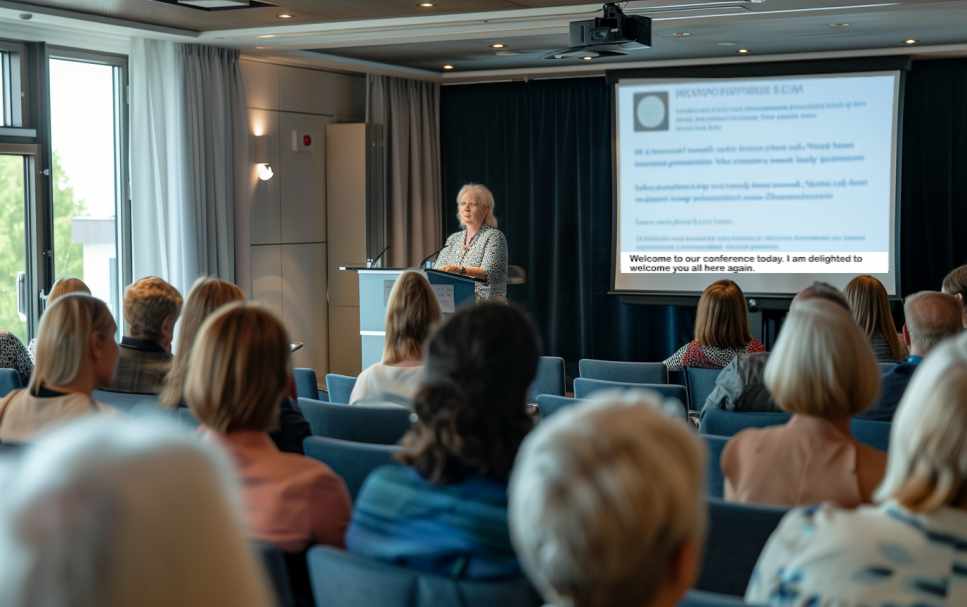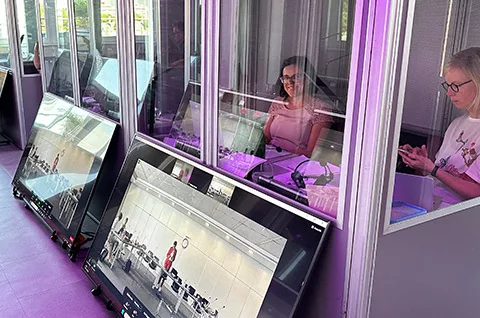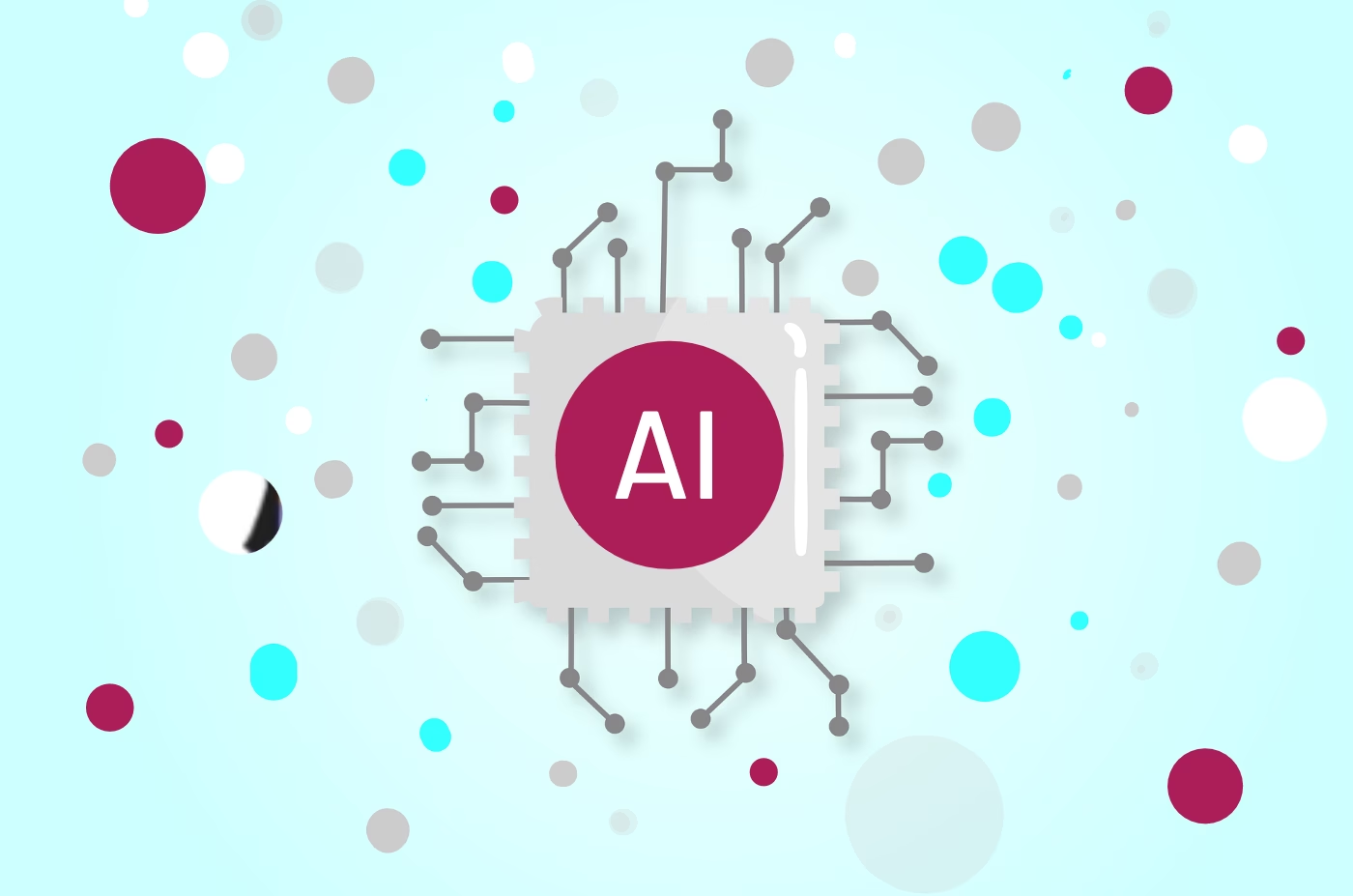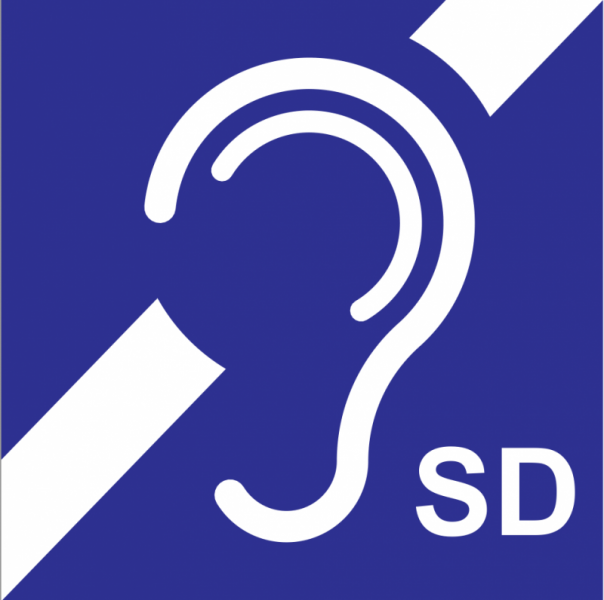Written interpreters for events and conferences
We can provide you with captioners, offer solutions with artificial intelligence and lend you the technology you need to make live captions visible to your audience.
Written interpreting is an important part of accessible communication and enables deaf and hard of hearing people to participate fully in conferences, meetings, digital meetings and video conferences. It is also possible to use subtitles for simultaneous translation.
We support you with technical planning, implementation and communication with the written interpreters. Simply contact us, we will be happy to help you.
* free of charge and without obligation

29 years Experience
Professional interpreters & AI
Full service
On-site, online or AI solutions

Technology for written interpreters
We offer you all the technology you need for the use of written interpreters and live subtitling. Requirements vary depending on the size of the event and whether it takes place on site or online.
It is important that the interpreters can clearly hear and see what is happening and being said at the event. The live subtitles can then be displayed on separate screens, provided tablets or embedded in an existing presentation or broadcast.
The written interpreters can either work on site or be connected via video conference. We offer the option of using written interpreters from our interpreting hubs for on-site conferences, video conferences or hybrid events.
Required technology: Video, camera, audio and IT technology as well as software that can display live subtitles. We offer the entire technical package and take care of the planning and implementation of your conference.
* free of charge and without obligation

Written interpreting with artificial intelligence
We also offer advanced AI-powered written interpreting that makes events and conferences more accessible worldwide. Our AI-powered solutions enable the fast and accurate conversion of spoken language into text, ideal for live subtitling and real-time communication. By using AI, we can significantly increase the efficiency and speed of interpreting while ensuring the security and reliability of our technology. We provide you with the technology you need to make your events successful and inclusive.
* free of charge and without obligation

Written interpreting - frequently asked questions
In written interpreting, the interpreters listen to the spoken language and translate it simultaneously into written text. This is done either manually by a professional written interpreter or automatically with the help of speech-to-text technology (the advantages and disadvantages of both variants are explained below). The text is then displayed on a screen, tablet or monitor for the audience, usually with a time delay of just a few seconds. The text can also be displayed during ongoing presentations or video transmissions.
In written interpreting, the spoken word is written down simultaneously. Written interpreters use various methods for this:
1. classic transcript: What is heard is transcribed in real time on a laptop keyboard.
2. speech recognition: the interpreter repeats what he/she hears into a microphone and software converts it into text.
3. computer-compatible machine stenography: A special stenography keyboard is used to convert abbreviated entries into longhand.
The generated text is then either projected onto a screen or onto a wall using a projector or transmitted online so that hearing-impaired people can read along. This enables active participation in conversations, lectures or events.
Written interpreting can be used both at face-to-face events and online and can therefore be used flexibly. It is particularly suitable for hearing-impaired people who have a good command of written language but have difficulty understanding spoken language.
Written interpreting plays a crucial role in promoting inclusion and barrier-free access to information. It enables people with hearing impairments to actively participate in congresses, conferences and digital events by giving them access to spoken content virtually in real time.
The integration of live subtitles generated by written interpreters is easily possible in video conferences and digital meetings, e.g. via Zoom or Microsoft Teams. Either a separate stream with live subtitles is provided for the participants or the subtitles are displayed for everyone to see.
Written interpreters are preferably provided with an interpreting booth. From there, they can follow the conference proceedings undisturbed and listen to and interpret what is being said via headphones.
The interpreters need a laptop and an internet connection. To convert the spoken word into text, either special speech-to-text software is used or the text is entered simultaneously into a text editor.
To make the live subtitles visible, another laptop with video editing software is required. From here, the subtitles are either displayed on a separate screen or faded in under a running presentation.
There is also the option of using a so-called steno mask. In this case, the interpreters sit in the room (and no longer in a soundproof booth) and speak into a special, soundproof mask. However, this option is less professional and should only be used in consultation with the interpreters.
We decide which technical setup is best for you according to your needs and in consultation with the interpreting team.
We offer comprehensive solutions for written interpreting with AI. Find out more here: Interpreting solutions with artificial intelligence
Live subtitles with AI:
Live subtitles can be generated by artificial intelligence. Although this technology is not flawless, it has improved considerably in recent years. Interpreters can be used as a support to increase accuracy.
Advantages and disadvantages of written interpreters vs. AI:
Written interpreter:
Advantages: High accuracy, contextual understanding and data protection through local data processing. Flexibility in adapting translations to the target group.
Disadvantages: Higher costs, limited availability and possible delays.
AI:
Advantages: Speed, cost efficiency and availability. Modern AI systems offer improved data protection functions and can work in real time.
Disadvantages: Lower accuracy compared to human interpreters, although the technology is constantly improving.
Request interpreters and technology without obligation
Only fill in what you already know. Feel free to leave fields blank. We will get back to you quickly, advise you in detail and help you with planning and selection.
Do you need help? Simply contact us directly or use our chat function.
EU accessibility requirements
The EU has introduced comprehensive accessibility standards with Directive (EU) 2019/882, known as the European Accessibility Act (EAA). In Germany, this directive will be implemented by the Barrierefreiheitsstärkungsgesetz (BFSG), which will apply from June 28, 2025. From this date, numerous products and services, including digital meetings, must be accessible.
